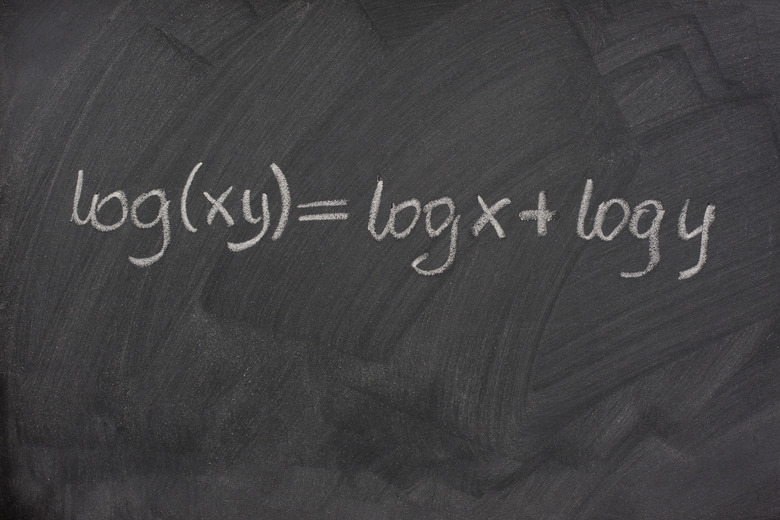How To Cancel A Natural Log
In mathematics, the logarithm of any number is an exponent to which another number, called a base, must be raised to produce that number. For example, since 5 raised to the third power is 125, the logarithm of 125 to the base 5 is 3. The natural logarithm of a number is a specific case in which the base is the irrational number e, equal to about 2.7183.
Terminology and Notation
Terminology and Notation
When using e as a base, you write "ln x," with the e subscript implied. This convention is similar to "log x," where base 10 is implied. This is because e and 10 are by far the most common bases found in everyday science and math applications.
Canceling the Natural Log
Canceling the Natural Log
Two important properties of logarithms make solving problems involving e simpler. These are: e raised to the power of (ln x) = x, and the ln of (e raised to the power of x) = x. For example, to find z in the expression
12 = e to the power of 5z,
take the natural log of both sides to get
ln 12 = ln e to the power of 5z, or
ln 12 = 5z, which reduces to
z = (ln 12)/5, or 0.497.
Cite This Article
MLA
Crystal, Mike. "How To Cancel A Natural Log" sciencing.com, https://www.sciencing.com/cancel-natural-log-8205306/. 24 April 2017.
APA
Crystal, Mike. (2017, April 24). How To Cancel A Natural Log. sciencing.com. Retrieved from https://www.sciencing.com/cancel-natural-log-8205306/
Chicago
Crystal, Mike. How To Cancel A Natural Log last modified March 24, 2022. https://www.sciencing.com/cancel-natural-log-8205306/
